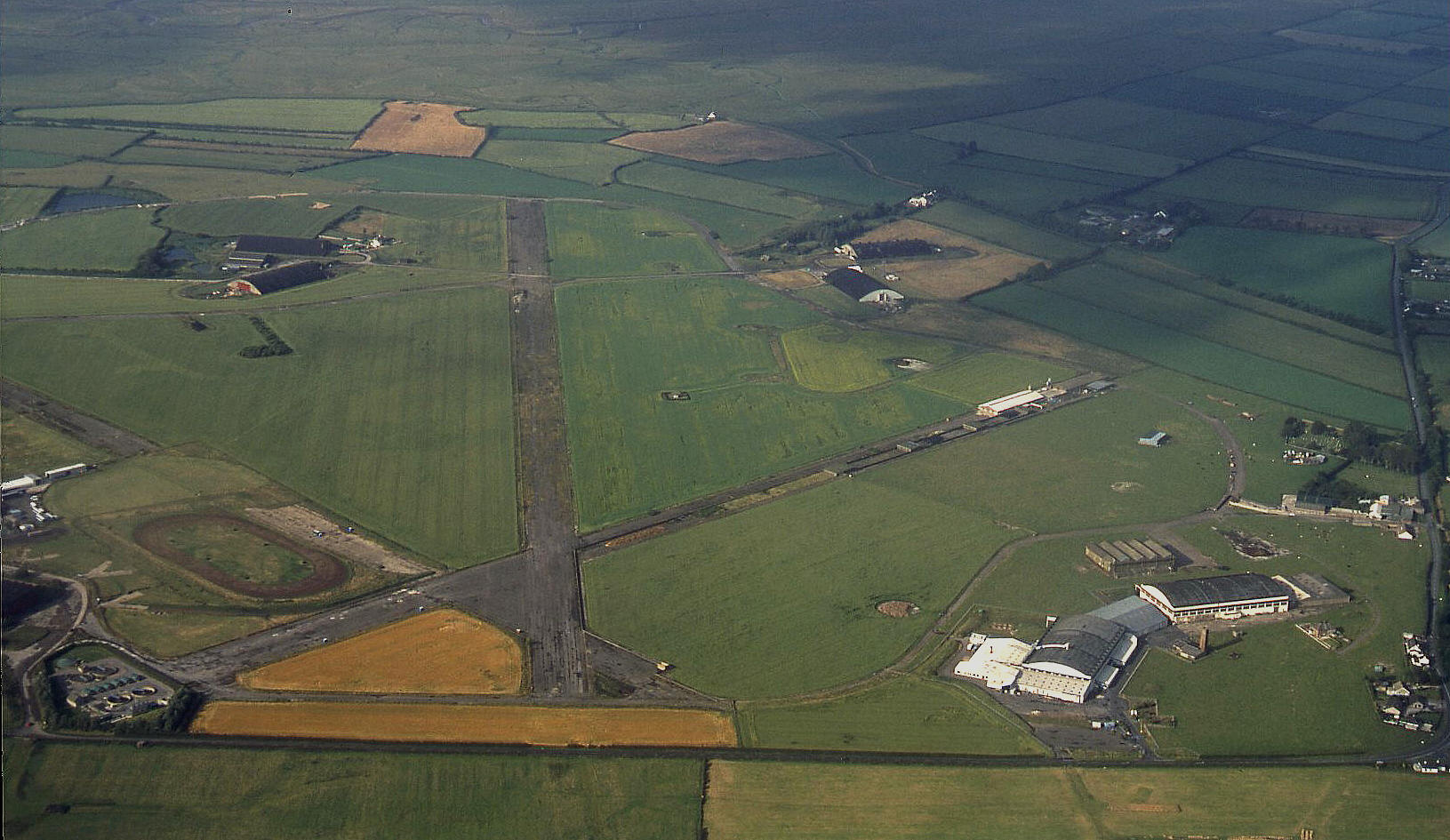Silloth
SILLOTH: Military aerodrome, (later civil aerodrome?) or allowing civil use
Note: Pictures by the author unless specified.
Military users: WW2: RAF Coastal Command 17 Group
No.1 (Coastal) Operational Training Unit (OTU)
This OTU operated Avro Ansons, Bristol Blenheims & Beauforts and Lockheed Hudsons
RAF Training Command 17 Group
6 OTU (Wellingtons)
22 MU
Civil activities: Post 1945: GA charter and training
Charter/air taxi: Post 1945: Cumberland Aviation Services
Flying school: Post 1945: Northern Air Schools
Aerial photography: Post 1945: Cumberland Aviation Services
Location: NE of B5302, W of Hartlaw, 0.5nm E of Silloth
Period of operation: Military: 1939 to 1960. In 1985 private flying was listed as being the main activity
Runways: WW2: 05/23 1445x46 hard 10/28 997x46 hard
01/19 1033x46 hard
NOTES: The No.1 (Coastal) OTU was formed here in April 1940 and stayed until March 1943. For some seemingly unfathomable reason, (quite typical of RAF planning during WW2), they were then moved to RAF THORNABY in YORKSHIRE to be disbanded a few months later in October 1943.
In 1945 British Aviation Services ferried thirty six ex-RAF Dakotas to Cartierville near Montreal in Canada for conversion to civil use from SILLOTH.
In 1975 SILLOTH was listed as a private airstrip operated by the British Steel Corporation. (But come on…hardly an airstrip surely?).
AN INTERESTING ACCOUNT TO SAY THE LEAST
This is from We Landed By Moonlight by Hugh Verity first published in 1978. Hugh was leading 'A' Flight with 161 (SD) Squadron. By 1943 they were based permanently at TEMPSFORD (BEDFORDSHIRE), but nearly all operations during the 'moon period' each month had been, and still were, from TANGMERE (SUSSEX). Flying Westland Lysanders to deliver and collect agents, VIPs and 'parcels' usually containing highly secret intelligence information and equipment such as radios for use by the French Resistence circuits. This was a very secret operation, hidden even from senior government ministers.
"After a couple of short of short flights to familiarise myself with the Hudson in the first week of February, I took the 'A' Flight Lysanders down to Tangmere for the moon period." My note, they ideally needed a fairly bright moon to navigate by and especially to identify the chosen field and safely land on it. The reality was often far more difficult in various ways - and many missions had to be abandoned. "At the beginning of March John Bridger and I went to the Coastal Command Operational Training Unit at RAF Silloth for a Hudson familiarisation course. I had been there before, just after my brief honeymoon at the end of August 1940, to learn to fly the ill-fated Botha."
"After a concentrated few hours of ground school our flying training was packed into three days and nights." My note, can you imagine such a regime being regarded as even barely adequate today!?! "On 6 March I did no less than four daylight trips (including one when the main wiring circuit caught fire in the air filling the aeroplane with smoke) and two short night sorties. Our instructors (Flt Lt Thompson and Flg Off Holdsworth) were hard to persuade that we should practise landing the Hudson 20 knots slower over the hedge than everybody else. I had observed the burnt out hulk of a Hudson which one of the trainees had driven on to the runway at such a high speed that the undercarriage had been forced up into the engine."
"Following this course, which had lasted less than a week, I stuck in my log-book a scruffy manuscript slip of paper certifying that I had 'qualified as first pilot of Hudsons day and night'. Writing in 1976 I cannot help reflecting how long such a retraining course would last now and looking back with nostalgia at the pressures of war when we got things done at some speed."
This said, reading his book, it is plainly clear that the training was highly inadequate. Only a large amount of luck was often required to survive, and the skills developed 'on the job'. And none more so than in the operations the two SD (Special Duties) Squadrons, 138 and 161 'A' Flight' especially, performed. In the case of the latter, quite literally 'cutting edge' flying in every way.
A PERSONAL MEMORY
In 2003 I flew past Silloth with James Roland in G-DRAM on our big floatplane adventure to and from SWANAGE (DORSET) to celebrate the "alledged" centennary of powered flight, (see FLYER magazine November 2003 edition), and it was obviously a pretty major air base before closing in 1960.
Brian Jordan
This comment was written on: 2018-07-23 15:31:15My father was an instructor in 6 (OTU) based at Silloth. He was involved in a bad air accident over the Irish Sea. If it's of any interest I have a write-up of the incident?
We'd love to hear from you, so please scroll down to leave a comment!
Leave a comment ...
Copyright (c) UK Airfield Guide

















